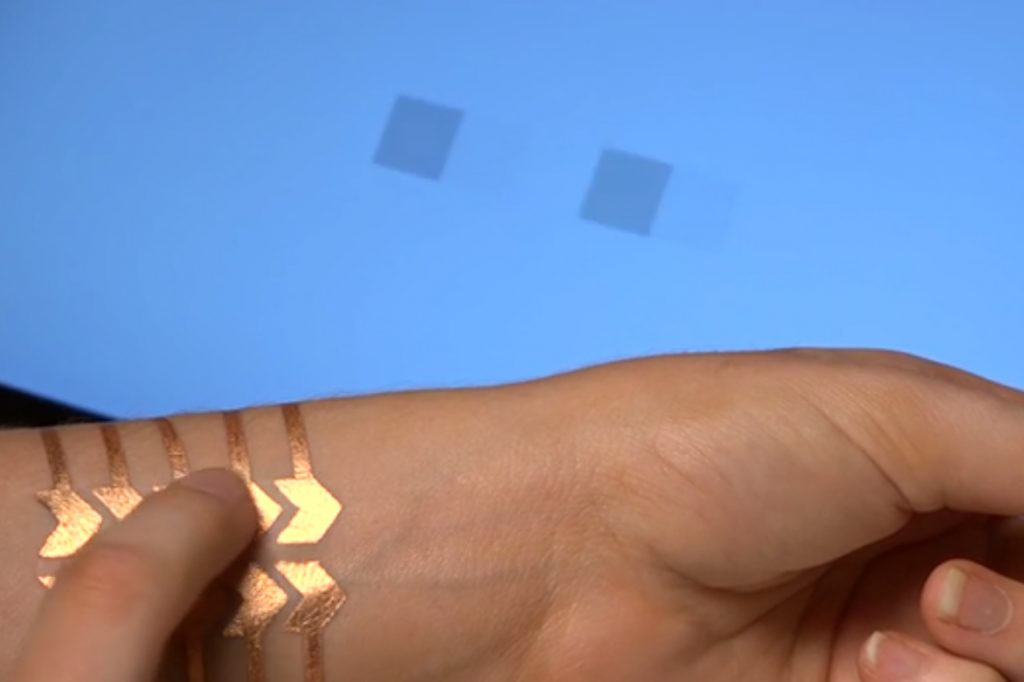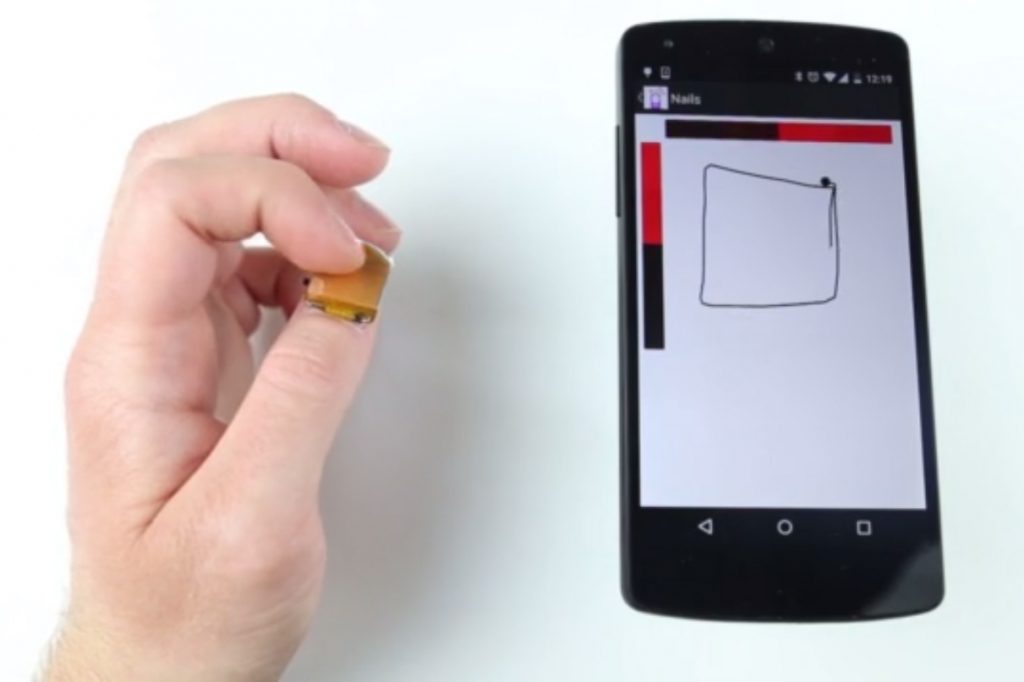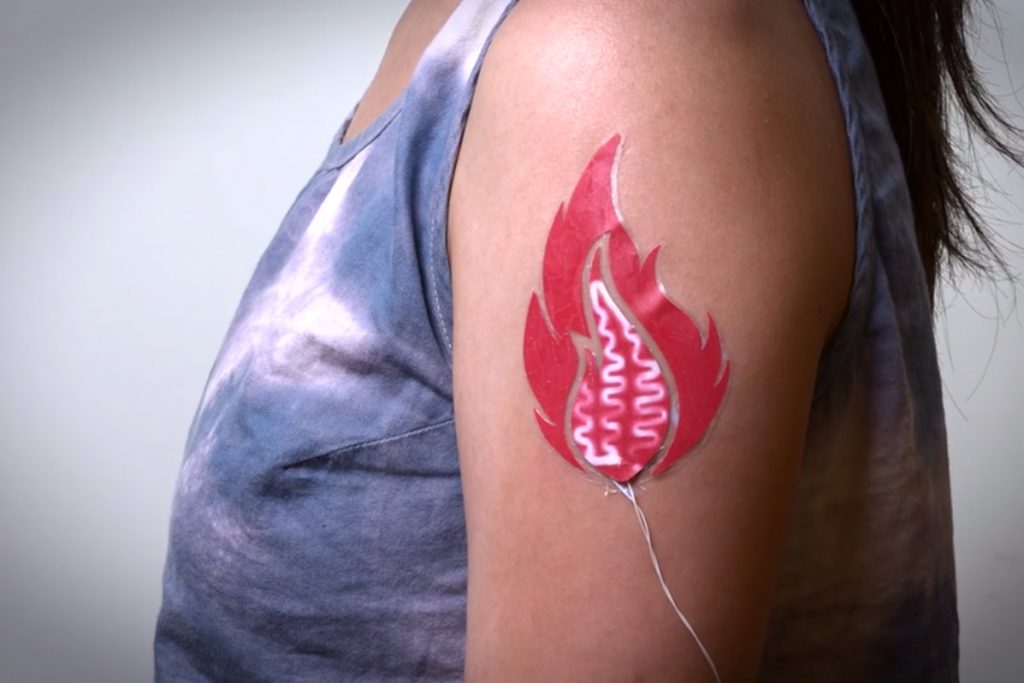MIT Transform Tattoos and Nail Art into Interactive Digital Accessories

image credit: screenshot from Vimeo via duoskin.media.mit.edu
Just when you think cyborgs only exist in Hollywood, there are scientists who are actually working on cyborg-like devices in real life. Further blurring the lines between technology and humans, researchers from the Massachusetts Institute of Technology (MIT) have developed various ways to fuse the two: from X-ray vision to digital interactivity right onto the skin.
Conceptualized by Cindy Hsin-Liu Kao, the NailO and DuoSkin are two unusual inventions that plays around the idea of using the human body as a means to interact with a computer. Typically, hands are usually used to control devices, most commonly through keyboards, trackpads, and touchscreens. But Kao’s inventions are more creatively thought of.

image credit: screenshot from Vimeo via nailo.media.mit.edu
It’s a device that’s literally on your fingertip. Using the nail thumb as the trackpad, a sensor pad is placed right on top of the thumb’s nail with the index finger being used to manipulate the movement on the computer. It won an honorable mention award in the CHI Conference in Seoul, Korea which basically featured advancements in human computer interface (HCI).
Kao’s NailO trackpad can easily be mistaken for nail art on a sore thumb. But it actually offers some neat features and benefits:
- It can swipe and click – The NailO trackpad can sync well with programs that involve a lot of scrolling and clicking. Browsing through an ebook, presenting a slideshow or even reading messages on a smartphone can be done with a glide and tap on a fingernail.
- It’s subtle and hands-free – The device acts like a remote control but the only difference is, you don’t have to hold it. Tacked on your thumb, you can easily move slides and scroll up and down without a device on your hand.
- It is stylish – Especially for the ladies, the NailO also acts as a nail art accessory. It has different designs and colors that can easily match any outfit.
The NailO however, still has some pretty limited talents to offer. Other than what was mentioned earlier, the device is pretty much simple and straightforward.

image credit: screenshot from Vimeo via duoskin.media.mit.edu
A more recent invention of Kao is a temporary tattoo that can be applied on the skin and control smartphone devices. Done in partnership with Microsoft Research, DuoSkin can do more than what NailO does. It can facilitate the input, output, and exchange of information though these hi-tech tattoos. According to a CNN report, “the tattoo is made up of adhesive tattoo paper, an insulation layer, gold leaf — the kind often found in picture frames and chocolates — and a silicon overlay.” Kao estimated that the cost to build one tattoo was less than US$175.
Sporting different designs, the DuoSkin enables the user to do several things:
- It can act as a trackpad – Just like the NailO device, the DuoSkin can be used to manipulate screen movement and click right on the tattoo.
- It can change color – This might seem like a pretty petty feature, but a tattoo that changes color based on one’s own body temperature can be quite amazing. With the assistance of the computer, the DuoSkin can display changes in color acting as an output.
- It can communicate – Thease tattoos can also communicate with other devices using near-field communication or NFC. with a microchip embedded in a coil-like design, information can actually be read with the scan of a smartphone. (Much like how barcodes are done.)
As both are still in the experimental or prototype phase, the devices have yet to be seen in the mainstream consumer tech market. But it is expected that in the foreseeable future, Kao’s inventions would cater to the fashion and gaming industry. For now, they remain in the fun and out-of-the-box labs of MIT.